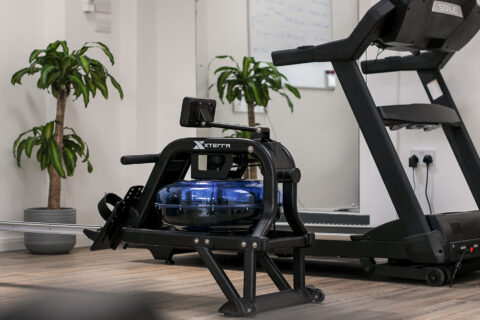Fibromyalgia is a condition that results in widespread pain throughout the entire body. Similarly, those with the condition often suffer from tender points that are sensitive to the touch. While the causes and effects of fibromyalgia are often linked to emotion, it isn’t technically considered an emotional disease. Despite this, we can’t underestimate the power and impact of emotion in relation to this condition.
For instance, extreme emotional stress is one of the leading triggers of fibromyalgia. Those who have been subjected to major emotional trauma, such as serving in the armed forces during a war, are often diagnosed with the condition.
Not only can emotional turmoil be a cause of fibromyalgia, but it can also be the result. A common emotional side effect of the condition is low moods and feelings of worry and frustration due to the prevalence of pain. “Fibro-fog” is a known symptom which results in memory and concentration issues. In addition, fibromyalgia can lead to sleeping difficulties, resulting in debilitating fatigue.
Who is affected by fibromyalgia?
Fibromyalgia can affect anyone; however, it’s more commonly found in women than men. Typically, it develops between the ages of 25 and 55, but children and older people can also find themselves developing the condition. Interestingly, there are no clear numbers about how many people are impacted by fibromyalgia. However, it’s inferred that the condition is relatively common, with 1 in 20 people being affected to some degree. The uncertainty surrounding fibromyalgia stems from the difficulty of diagnosis; there are no specific tests available, and symptoms present themselves differently in each individual.
How is fibromyalgia treated?
Unfortunately, there isn’t an existing cure for fibromyalgia; however, symptoms can be relieved in various ways. Some examples of treatment include antidepressants and cognitive behavioural therapies. With this being said, one of the most effective forms of treatment is the incorporation of movement into everyday life.
How to get moving with fibromyalgia
You may be surprised to learn that aerobic exercises are among the most effective when managing fibromyalgia symptoms. The key is to start slow and work your way up. Your movement programme will begin with low-impact activities, such as walking. If this puts your joints and muscles under too much stress, non-weight-bearing exercises, like bicycling and swimming, are a handy alternative. You can start by doing these for as little as five minutes and add 30 seconds daily. The goal is to reach 30 minutes of walking/biking/swimming in a day, which you ideally want to be doing three or four times per week.
Understandably, you won’t feel motivated to drag yourself out of the house for some exercise every day. In this instance, yoga poses are ideal. Not only does yoga help alleviate muscle pain and stiffness, but the meditative effects also help relieve feelings of depression, anxiety, and poor sleep.
It wasn’t too long ago that people with fibromyalgia were discouraged from engaging in strength training. Despite this, research has since determined that moderate strength training is both safe and beneficial. From resistance bands to lighter free weights, incorporating these into your routine can make daily activities much more manageable.
In addition to strength training, stretching is key. This is because many people with fibromyalgia can’t move their joints to their full range of motion. As a result, stretching can improve flexibility and reduce joint stiffness.
The impact of movement
It goes without saying that the appropriate amount of movement can significantly decrease joint stiffness and improve muscle strength. From this, chronic pain will likely reduce. Despite this, the effects of movement go way beyond a physical capacity. In fact, movement plays an integral role in improving and maintaining your emotional well-being.
This emotional impact has many layers—for instance, less pain results in less frustration, which leads to improved moods. When you move, endorphins are released. These are otherwise known as your “happy hormones”, and they’re also proven to have pain-relieving qualities.
Manual lymphatic drainage for fibromyalgia
In addition to regular movement, manual lymphatic drainage (MLD) can be an effective method of relieving joint pain and stiffness caused by fibromyalgia. MLD is an advanced and specialised massage technique. This refers to a movement combination that incites multiple effects within the tissue.
Fortunately, MLD is just one of the many great services offered by Be You Health Studios, and you can book in for a specialised massage here.
What else can Be You do to help?
As well as our MLD services, we’re also able to develop bespoke movement programmes for individuals of all ability levels. If you’ve been diagnosed with fibromyalgia and you’re not quite sure how to approach your movement journey, please don’t hesitate to get in touch.
We look forward to hearing from you and helping to change your life for the better.









